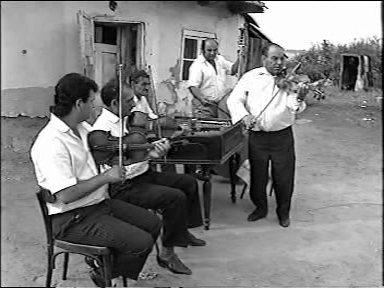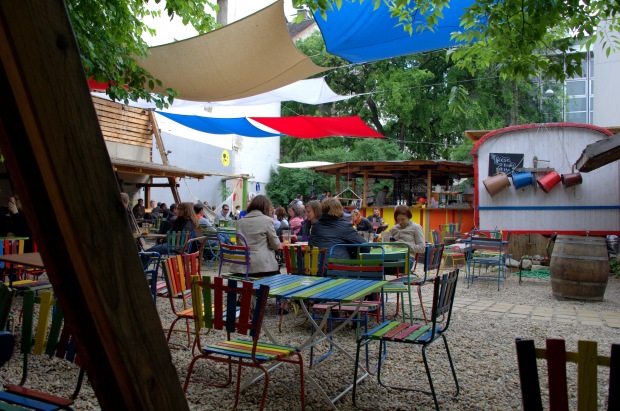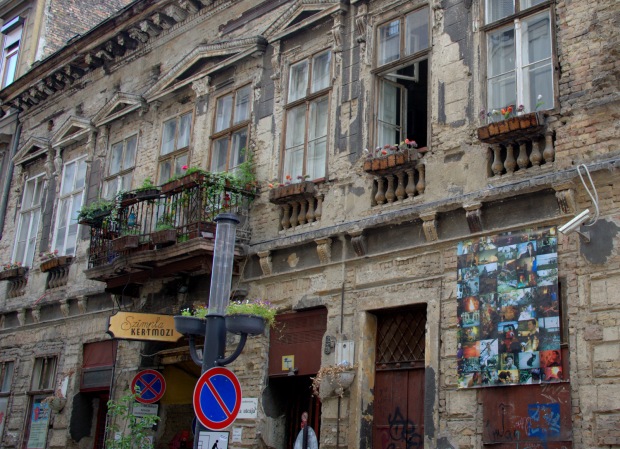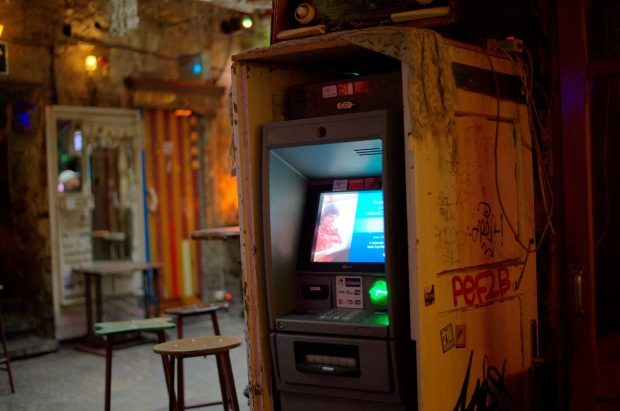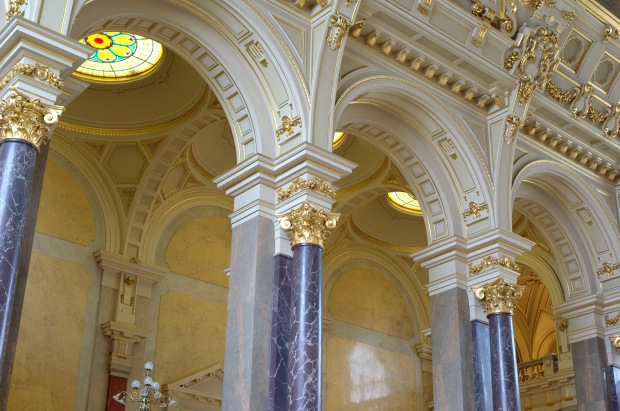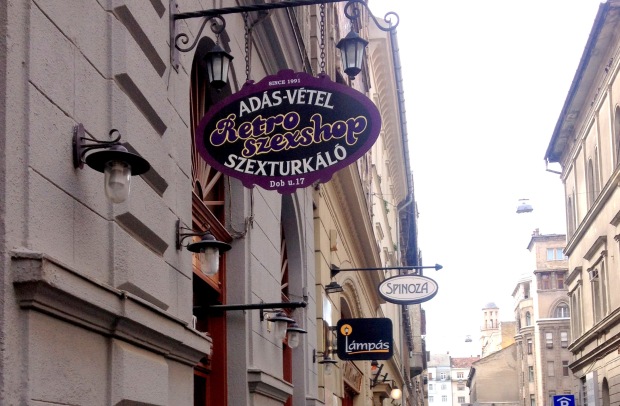Budapest it seems is just full of surprises.
As we wobbled around Budapest’s Jewish district, I realised that this was the first time in I don’t know how long that I hadn’t researched a trip. As discussed with some fellow bloggers recently, many travellers are of the ‘I’ll just walk around and discover things‘ persuasion. I am more the ‘I must devour blogs and travel websites for weeks to discover unique things’ type. In Budapest I had Julia, a born and bred local, so I had no issues leaving the itinerary in her hands. But when we walked away from a ruin pub because of the rather large crown hanging out the front and she steered me toward another with a defeated ‘oh, let’s just go here’, I didn’t have high expectations.
Like Szimpla, Fogas Haz also hides itself pretty well. But the two burly security guys standing out the front were a pretty good clue that something interesting was behind them. One of the security guys checked our bags before letting us in. Julia told me this is something she’s never come across in Budapest, which perhaps explains why she looked at him like he’d asked her to bear him five children.
Fogas Haz has the same run down vibe as Szimpla, it’s layout also having a large open-air space in the middle and a second floor rimmed with balconies and rooms to explore. While it has none of the socialist kitsch of Szimpla, it does however have an Escape Room. We stayed only for one drink, but that was long enough for Julia to run into a friend, who coincidentally was one of the organisers of the bicycle exhibition we had seen earlier at the Ethnographic Museum. Apparently Captain Customer Service’s apathy had not gone unnoticed and he was soon to be fired. Maybe there were comment cards there after all (for this sentence to make sense, you’ll need to have read Part 1).
As they spoke, I watched a gypsy folk band who were playing at the back of the building. They had a strange instrument which Google later told me was a Cimbalom. From afar it looks like a piano, or perhaps a harpsichord since it’s small. It’s really more of a xylophone, with the top open so the musician can play the strings with two beaters. Cimbaloms are a traditional Hungarian instrument but can be found in other Eastern European countries like Romania, Ukraine and the Czech Republic. Yes, Google told me that too.
As I watched the band, Julia saw two hulking security guards wandering through the crowd. “Who do they think they are, walking around trying to be all imposing like that?” she asked incredulously. When I replied that that’s what security are supposed to do – walk around and act all imposing so nobody misbehaves – she insisted “That doesn’t happen in Budapest”. But Julia’s been in the UK for a few years, so perhaps this is not so unheard of anymore. Nevertheless, her horror amused me. As we left, the doorman confiscate a half full bottle of vodka from an unlucky girl on her way in. Julia groaned. (more…)

